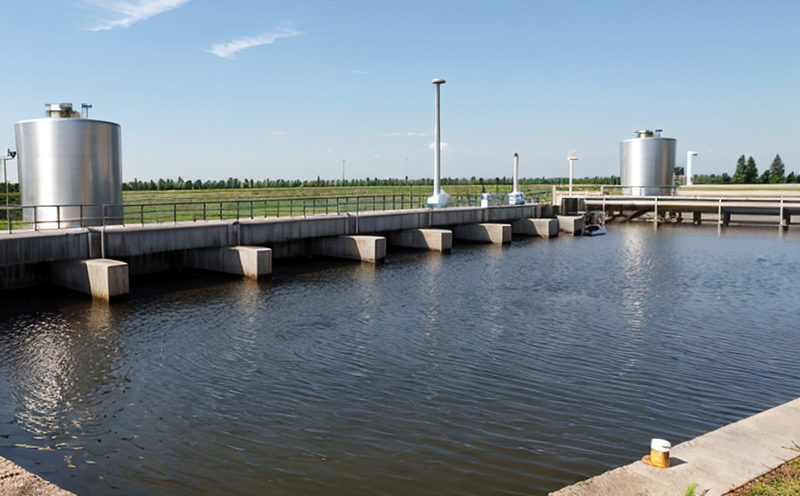ASTM E2871 Rapid Coliform Testing in Water Samples
The ASTM E2871 standard provides a method for rapid detection of coliform bacteria in water samples. This test is crucial for ensuring the safety and quality of drinking water, as well as other types of potable water systems. Coliforms are considered indicator organisms that can signal the presence of pathogenic microorganisms.
The procedure involves the use of a membrane filter to concentrate the sample and then incubating it under conditions favorable for coliform growth. The test is designed to yield results within 24 hours, significantly reducing the time required for traditional culture-based methods. This rapidity allows for quicker decision-making in water quality management.
The ASTM E2871 method employs a combination of membrane filtration and colorimetric detection to identify coliforms. The filter is placed on an agar medium pre-laden with indicators that will change color if coliform bacteria are present. This approach ensures high sensitivity and specificity, which is essential for accurate water quality assessment.
One key advantage of ASTM E2871 is its ability to handle a wide range of sample matrices, from clear water to turbid samples. The test’s robustness allows it to be used in diverse environmental conditions, making it versatile for various applications within the water and wastewater sectors. Compliance with this standard ensures consistent results that are recognized internationally.
Another benefit is its compatibility with automated systems, which can enhance throughput and reduce human error. This automation is particularly valuable in large-scale water treatment facilities where rapid analysis is necessary to maintain water quality standards.
The ASTM E2871 method also supports the integration of advanced microbiological techniques, such as PCR-based methods for enhanced specificity and sensitivity. These advancements are crucial for detecting low levels of contamination that traditional culture methods might miss.
Quality managers and compliance officers can rely on this test to ensure their water systems meet regulatory standards such as those set by the World Health Organization (WHO) and United States Environmental Protection Agency (US EPA). By adhering to ASTM E2871, laboratories provide a reliable method for detecting coliforms, thereby contributing to public health safety.
Research and development engineers can leverage this test in their efforts to improve water treatment processes. Understanding the dynamics of coliform presence and its rapid detection allows for better optimization of purification methods and protocols. For procurement teams, ensuring that suppliers adhere to such standards demonstrates a commitment to quality assurance and ethical sourcing practices.
Why Choose This Test
- ASTM E2871 provides a quick and accurate method for detecting coliforms in water samples, reducing analysis time significantly compared to traditional methods.
- The robustness of the test allows it to handle various sample matrices, including turbid waters, ensuring consistent results across different environments.
- Automation options are available, which can further enhance throughput and reliability of the testing process.
The combination of these factors makes ASTM E2871 an ideal choice for water quality managers and compliance officers seeking a reliable and efficient method to ensure public health safety and regulatory compliance.
International Acceptance and Recognition
The ASTM E2871 standard has gained widespread acceptance in both developed and developing countries. Its use is encouraged by international organizations such as the World Health Organization (WHO) and the United Nations Environment Programme (UNEP). The recognition of this method ensures that results are consistent and comparable across different regions, facilitating global collaboration on water quality.
Many regulatory bodies worldwide have adopted ASTM E2871 as a standard for coliform testing in potable water systems. This includes countries like the United States, Canada, and various European nations, all of which value the rapid and accurate detection capabilities provided by this method.
Environmental and Sustainability Contributions
The use of ASTM E2871 contributes to environmental sustainability in several ways. By ensuring that water systems are free from coliform contamination, it helps prevent the spread of pathogens, reducing the need for additional treatment processes. This leads to more efficient resource management and reduced waste.
- By minimizing contamination, ASTM E2871 supports ecosystem health by preventing the introduction of harmful microorganisms into natural water bodies.
- The rapid identification of water quality issues allows for timely corrective actions, which can prevent larger-scale environmental impacts.
In summary, ASTM E2871 plays a crucial role in maintaining public health and supporting sustainable practices within the water sector.





